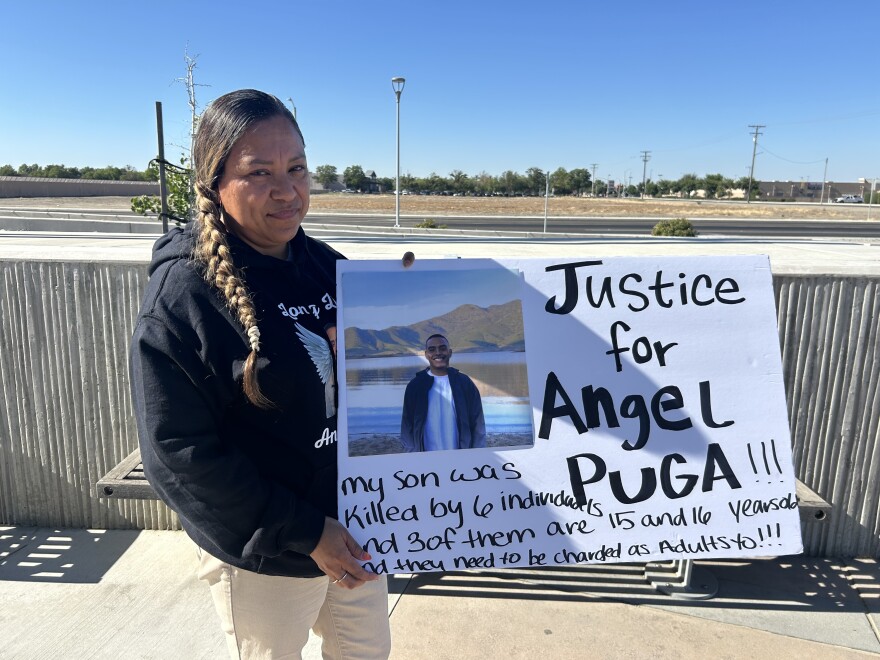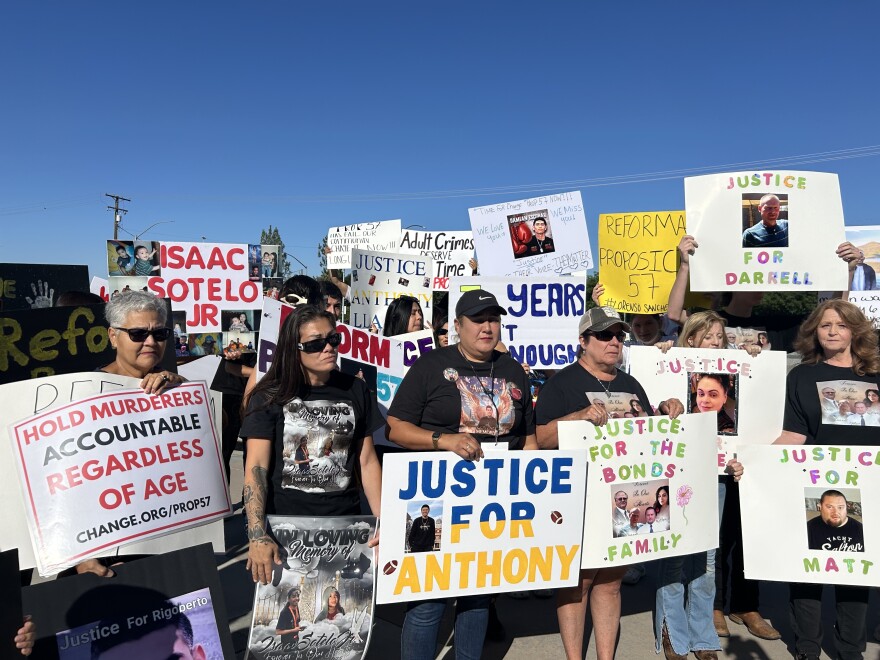HANFORD, Calif. - Stephanie Tellez recalls a tragedy involving her only son. It took place last Thanksgiving morning. It was 2 a.m. and 22-year-old Anthony Calderon was at an apartment complex in central Fresno spending time with two of his friends.
A group approached her son and his friends and fired nearly 50 gunshots.
“He was a victim of a shooting that involved three minors and three adults,” Tellez says. “It was a random act of violence. They did not know him and he had no affiliation with them.”
Tellez says her son had dreams to become a police officer someday. She believes the suspects in her son’s shooting also have gang affiliations.
“I believe there are adults who have these kids committing crimes for them,” she says. “It’s part of an initiation or whatever it may be.”
Wave of teen violence grips families
Tellez and roughly 100 other mothers and families gathered outside the Kings County courthouse earlier this month calling for changes to how the state handles serious crimes committed by minors.
Tellez helped organize the event and says this is only the beginning.
She plans to continue holding similar protests throughout the Central Valley, with hopes of eventually bringing the message to the state capital.
“There needs to be a voice. There needs to be a light that shines on what’s been going on with all of us,” Tellez says. “We all have different stories, but they’re all involving minors–and we need a change.”
Many of the protestors held posters with photos of their children and loved ones who have been killed, mostly sons.
Their grief is ongoing, but now they say they are channeling it into a movement for change. The turnout at the rally included families from many Central Valley towns like Madera, Fresno, Farmersville, and Hanford.
It came weeks after a rash of deadly incidents in recent months across the Valley involving teenagers.
Just in April this year, an 18-year-old Clovis student, Caleb Quick, was gunned down outside a McDonald’s parking lot allegedly by a 16-year-old. Attorneys for the teen suspect says the shooting likely had to do about allegations of sexual assault against Quick.
That killing was followed later by a separate one in Kings County, where another high school student was allegedly fatally stabbed by a 15-year-old.
Later in May, a teen girl was stabbed inside a classroom in Porterville allegedly by another teen. These cases of violence are just a few among several that involve teens and varying back stories.

What data says about teen violence
Federal data shows that California generally arrests fewer youth who commit crimes like assault or theft compared to states like Alaska, Delaware, Illinois, Louisiana, Montana and South Dakota.
State officials in California have touted a decrease in crime in the last year, too. Early data from April showed that violent crime dropped across the board by 4.6% and property crimes dropped by 8.5%.
Other states have reported similar trends and a changing attitude against crime is largely to credit for the decreases since more funding and collaboration has been put in place among law enforcement agencies. Nationwide, murders are also down by at least 14% in the last year.
But while this data shows part of the picture, it doesn’t completely erase crime that still continues in communities.
And research shows that social media may play a big role in the violence that teens are exposed to. Researchers say online violence may influence teens to perpetrate a violent incident offline in the following months.
Teen violence is viewed as a public health issue. Health researchers link teen violence and exposure to negative cognitive outcomes, like a lower IQ, in adolescents.
In other words, exposure to violence can affect the development of a brain, especially the areas responsible for processing emotions, decision making, and understanding right from wrong. These changes may increase the likelihood of a young person engaging in violent behavior after the constant exposure.
Mothers call for tougher crime deterrents
At the Hanford rally, mothers and families called for longer sentences and stricter consequences for teenagers involved in violent crimes. They hope this can act as a deterrent to committing crimes.
“If they commit adult crimes, they could do adult time,” Patricia Cruz, 43, from Farmersville, said. “We want justice for our kids.”
This issue spurred Cruz to show up to a rally – something she has not done before. The rally brought her “mixed emotions" she says, but it was empowering to be around other mothers who she says are in “survival mode.”
But the mothers are also seeking to change laws to relieve some of the pressure on victims. They are demanding changes to Proposition 57, also known as the Public Safety and Rehabilitation Act. The 2016 law allows judges to determine if juveniles who are charged with serious crimes should be tried as adults. But youth are typically eligible for release when they reach the age of 25.
The Juvenile Justice in California” report found that of 89 juvenile cases processed in adult courts, just over half, or 55.1%, resulted in a conviction. Mothers say tougher penalties for youth crime suspects is an issue of fairness – as much as it is about justice for victims.
“A lot of us moms out here lost our babies to something that was dumb,” says Veronica Parker, a mother from Hanford whose son, Cruz, was shot and killed in a drive-by shooting. “We no longer have our kids, and [the juveniles] still have their lives.”

Teen violence comes from ‘a perfect storm of things’
Fresno County Chief Probation Officer Kirk Haynes agrees the juvenile justice system needs changes to improve public safety and ensure accountability for serious crimes.
“I think the awareness of the lack of accountability is a factor and I think youth are aware,” Chief Haynes told KVPR. “Gang members are aware that if you commit these serious crimes, you’re not going to be in custody for 20-30 years anymore. If you’re 16 or 17 years old, the most you’d be in custody for is six or seven years.”
Haynes also says there are signs among youth who enter the juvenile justice system that points to larger systemic problems.
“I think it’s a perfect storm of things. Brain development is one, trauma, the educational attainment or lack thereof,” Haynes says. “We deal with youth at different levels in the system.”
Haynes says despite victims of crimes living with the consequences, he’s concerned they’re not always part of the conversation for solutions.
But for the many mothers' families who rallied in Hanford to speak up about this problem, they are forcing their way into those conversations on their own.




